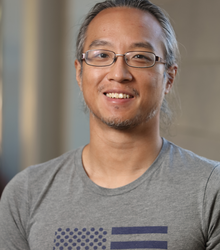
Jeffrey Teo
Ph.D., 2011, Pennsylvania
Associate Professor
Theoretical Condensed Matter Physics
Research Interests
A central theme of condensed matter physics is the study of systems with emergent collective degrees of freedom that can behave very differently from the microscopic individual constituents from which they arise. Quantum mechanics provides a further topological twist to the conventional theory. Due to strong correlation effects, the quantum ground state of a condensed matter system can be spatially entangled to an extent where its emergent quasiparticles behave so exotically that they are impossible to be realized by conventional fundamental particles. For example, an excitation in a fractional quantum Hall state can carry a fraction of an electric charge and obey fractional statistics, but at a fundamental level these excitations are the collective behavior of integer charged, fermionic electrons. These quantum entangled topological phases of matter are typically gapped and cannot be unentangled by any adiabatic process without closing the excitation energy gap or violating a symmetry. As a result, the unusual characteristics of their emergent quasiparticles are robust against perturbations. Interestingly these phases also can have tremendous implications for applications including dissipationless electric transport and topological quantum computation.
My research is centered around topological phases of matter, the realization of exotic quasiparticles as topological defects, and the search of topological materials.
Recent research areas
Fractional Ising-like twist defects in topological phases
Ising anyon (zero energy Majorana) quasiparticles have the ability to store quantum information non-locally in space to act as robust quantum bits. Recently, there have been theoretical proposals for realizing the even more exotic fractional Majorana quasiparticles in fractional topological insulator heterostructures, and in dislocations of a bilayer quantum Hall fluid. We recently demonstrated the statistical distinction between semiclassical topological defects and quantum deconfined excitations at a fundamental level. For example, the spin statistics theorem is modified for defects, and exchange-braiding relations satisfy a new set of algebraic structures. In fact, our framework is applicable to the general scenario, and will be valuable to all investigations of exotic defects.
Selected Publications
Departmental Committees
Ph.D. Qualifying Examination Committee (Member)
Outstanding Undergraduate and Graduate Student Award Committee (Member)
Undergraduate Scholarships and Fellowships Committee (Member)
Committee on Teaching (Member)
 Physics at Virginia
Physics at Virginia